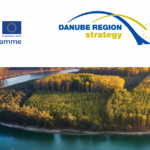Do you know how much floods cost us?
They are a real challenge in the Danube Basin, many floods occurring between 2002 and 2014, one of the most severe ones, in 2010, affecting mainly the central and eastern parts of the basin, caused 35 casualties, led to the evacuation of at least 15,200 people, and generated total damages estimated at €2.0 billion.
Considering the recent history and the future expectations saying that the general flood risk for the Danube region will continue to increase as a result of climate change, #EUSDR, through Priority Area 5 – Environmental Risks – addresses mainly the challenges of water scarcity, droughts and flood risks. The Priority Area’s most significant activity in the field of environmental risks is to facilitate the flood protection of the Region and to enhance the flood safety of the whole Danube Basin involving the 14 stakeholder countries.
Floods in the Danube region are per se a collective threat that may affect an increased number of people and economic assets and they rarely remain a national problem. Therefore, the practitioners have to adapt fast to this increasing risk as well as keeping pace with an ever faster changing society.
This week story presents: DAREnet @floodpractitioners, a project financed by @Horizon2020fp8. The project aims at increasing the innovation capacity in the area of civil protection, with special focus on global flood resilience of the Danube region countries.
By its activities, the project will provide a collaborative environment creating the DAREnet Network and Community, a large and structured network of practitioners. This is meant to catalyse innovation, focusing on inter-disciplinary knowledge, to help the flood practitioners to identify the associated innovation needs and opportunities and direct them towards innovations they really need. DAREnet ultimately will prepare the ground for effective innovation policies, by providing a more accurate assessment of what research and innovation can contribute to strengthening flood response and resilience.
If you wonder, how this project functions, let’s imagine the following scenario: landslides caused by heavy rain.
Using technologies for monitoring outgoing land masses become a research and innovation topic of a project working group. The analysis in the working group shows that the reliability of the usual laser-based monitoring systems is limited under heavy rain. Several alternatives are assessed. The assessment indicates that radar-based monitoring seems to be the most promising solution, however requiring additional research and development. This becomes a priority of the DAREnet Research and Innovation Roadmap.
Following the recommendation in the Roadmap, 3 flood management organisations from different countries, 1 research group specialised in signal processing and 1 SME specialising in radar technology form a small team to outline an initiative for the development of a reliable application with a moderate price. The initiative is open and communicated via the DAREnet Online Community Platform. This raises the interest in other countries and several other flood management organisations join the team. The final outline of the initiative, , becomes part of the DAREnet Research and Innovation Initiatives Portfolio.
DAREnet will promote this portfolio of practitioner innovation initiatives to the political and financial key-stakeholders on the national, regional and European level,
• to raise awareness of the critical role of innovation for strengthening regional flood resilience and
• to shape research agendas and define requirements, launch pre-commercial procurement, share best practices and drive research in their respective areas
In that way, many innovations and ideas emerging from the project find their uptake by practitioners all over the Danube Region and will strengthen flood response and resilience in the region to cope with upcoming challenges.
For further details about environmental risks, follow the link: https://www.danubeenvironmentalrisks.eu/
Photo credits: DAREnet




